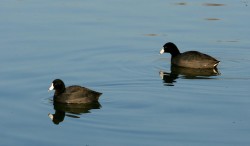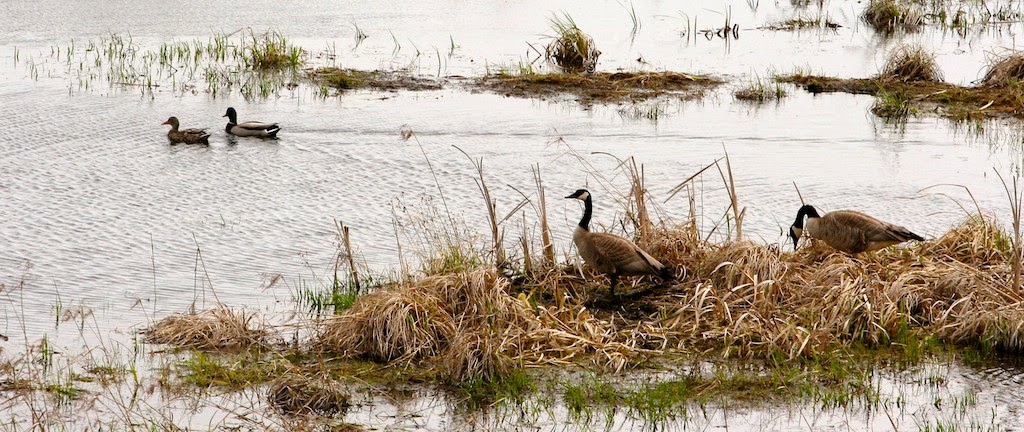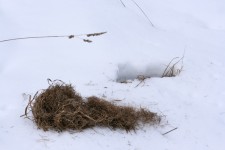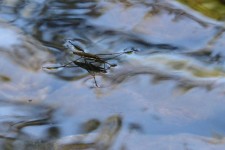Bottoms up! The tell-“tail” sign of a dabbling duck is tail feathers above water and head beneath the water.
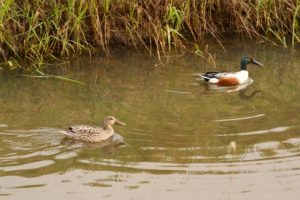
Ducks can generally be divided into two categories: divers and dabblers. The division pertains to how they obtain food. Dabblers eat food that is at the surface or just below the surface. Divers forage for food within the water column or at the bottom.
Mallards, wigeons and teals all dabble for food by dipping their bills just below the surface or dunking their head. Their flattened bills allow them to strain vegetation and small invertebrates out of the water.
Diving ducks, such as scaups and mergansers, swim underwater using their feet or wings to propel themselves. Some divers have narrow, pointed bills to catch fish while others have flatter bills to glean invertebrates (like small clams) from the bottom.
The difference in eating habits allows ducks to share a body of water without competing for food. Competition is lessened even more by a duck’s particular diet and where that food is found. Canvasbacks, redheads and lesser scaups are all diving ducks that can share a “pool”. Canvasbacks find their food at the bottom of the pool near the center while redheads prefer the shallower water near the edge. Lesser scaups seek the center area but within the water column to strain for small crustaceans.
Did you know that you can tell a diver from a dabbler without seeing it eat?
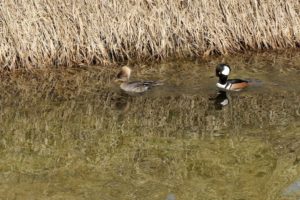
One way to tell divers from dabblers is their leg position. The centrally located legs of dabbler ducks allow them better mobility while feeding on land (such as in a grain field). The rear-positioned legs of diving ducks act like propellers while swimming but make walking on land awkward. Also, divers have larger feet than dabbler ducks to allow for more powerful swimming.
Secondly, the way ducks float on water provides a clue to whether they are dabblers or divers. Dabbler ducks float higher in the water so their tails are more visible than those of diving ducks. Diving ducks float lower in the water because they squeeze their feathers against their body to expel trapped air. This allows them to quickly dive and chase fish or crustaceans.
Dabblers and divers also differ by the area needed to land and take-off. Mallards can drop into a small pond and quickly take-off. The large wings of a dabbling duck compared to its body weight enable it to fly slowly and land in a small area with precision. Since dabbling ducks spend time in shallow wetlands and fields where they are more vulnerable to predators, their long, broad wings allow them to practically burst straight up in the air.
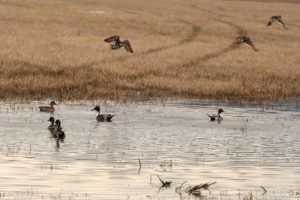
On the other hand, diving ducks seem to run forever across the water to take-off. Their short, narrow wings are great for compressing against their body while diving and for flying at high speeds over large bodies of water. However, those same wings require divers to run a long ways during take-off to gain the necessary speed.
Once you’ve determined if a duck is a diver or a dabbler, look for key markings on the duck to determine the species. Ducks Unlimited has a waterfowl identification page divided into dabbling ducks, diving ducks, geese and other waterfowl to help identify the species.

